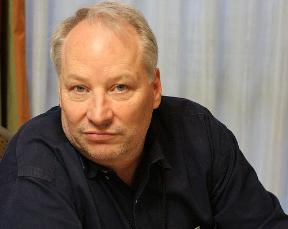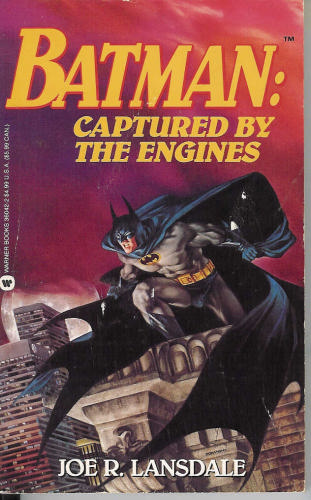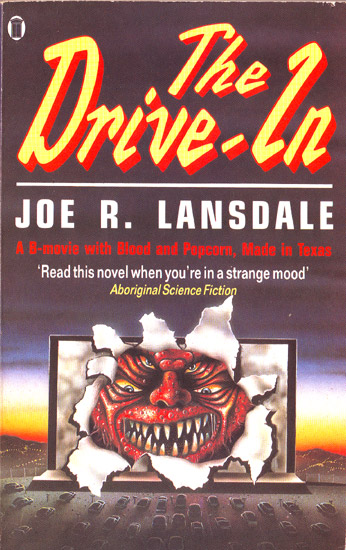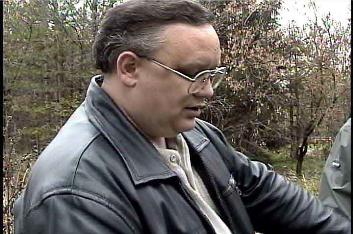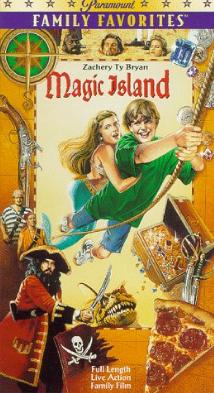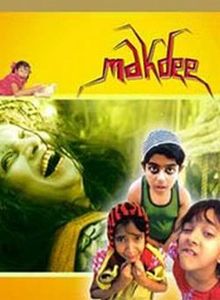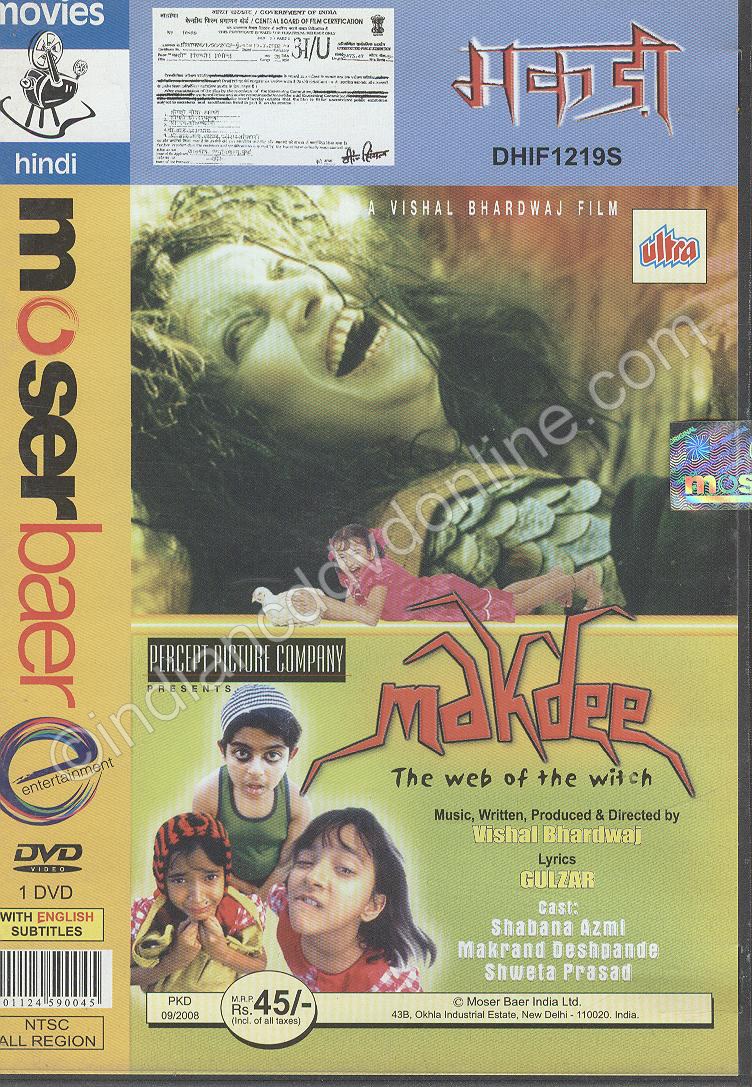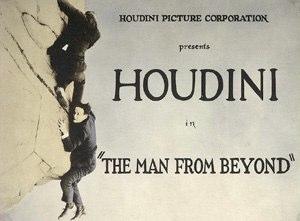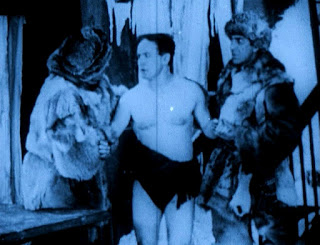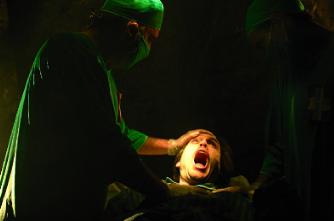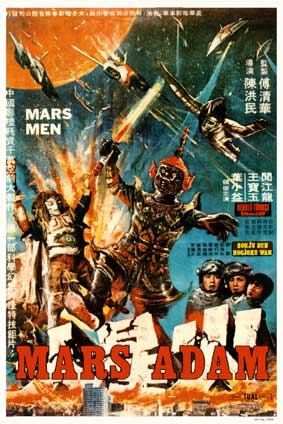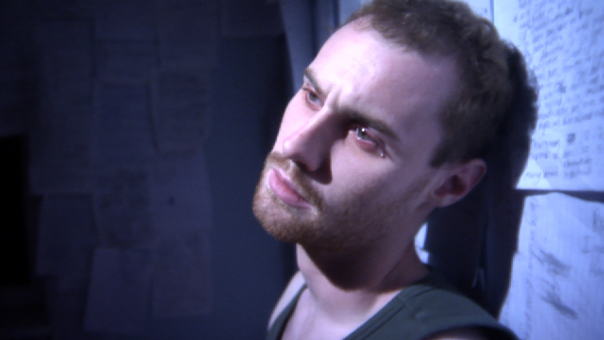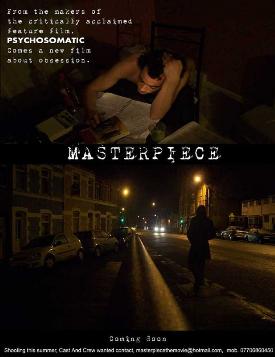I first interviewed Joe R Lansdale by post for Tales from the Broken Drum
, the fanzine of Octarine (the SF/Fantasy Humour Society) when his incredible book The Drive-In
was published in UK paperback in the early 1990s. Joe rapidly became one of my favourite authors and I was delighted to have the chance to meet him for a proper interview in 1996 when Mucho Mojo
was published. A heavily edited version of this was published in SFX
. This full transcript was published in The Brentford Mercury
, the newsletter of Sproutlore (the Official Robert Rankin Appreciation Society).
![]() I read that you wrote some novels before Act of Love under pseudonyms or as a ghost writer.
I read that you wrote some novels before Act of Love under pseudonyms or as a ghost writer."The ghosts will remain ghosts. I wrote a book as Ray Slater. It was a western. It came out over here in hardback. It was called
Texas Nightriders. That was the first novel that I sold. And then I did ones that are known. I did
The MIA Hunters based on an outline by Steven Merson, who created the characters. He went in and did some re-writing on it. But I certainly did the first draft on that. These were jobs that came my way: allowed me to eat; allowed me to write
The Magic Wagon and whatever else I was working on."
The new one, Mucho Mojo, seems to be a sequel to Savage Season."I think of it more as a series than a sequel because each book stands by itself. It's not like
The Drive-In."
So did you sit down and write it as a new story about Hap and Leonard, or did you have the idea for the story and think, 'This'll fit these characters'?"It's quite interesting. I never intended to write a series at all. When I wrote
Savage Season I was pretty pleased with it. I liked that book and I liked the characters. I tried to write another book and those damn characters wouldn't leave me alone. I eventually did write another book, which I was unhappy with. And I told my publisher when I turned it in, 'I'll tell you the truth, I worked and I worked and I worked, and it's not the book I wanted to write. And I'd like to withdraw it.' He said, 'Sure - go home and revise it, and be happy with it.' So I did, I went home, put it in a box, and wrote a completely new book. They were happy with it; I was happy with it: it was
Mucho Mojo. I have a new one written about those characters, called
The Two-Bear Mambo, which comes out here next year - it's out in the States next month. So I enjoy the characters. I don't intend to write about them exclusively but I certainly do like writing about them."
![]() With these new books you're moving more into psychological thriller territory and away from zombies and the supernatural.
With these new books you're moving more into psychological thriller territory and away from zombies and the supernatural."Actually, if you look through
By Bizarre Hands, you have stories like 'The Pit' and 'Night They Missed the Horror Show' and the title story; those are all actually dark crime stories. Throughout that book there are several stories of that ilk, and I think I've actually been going that way for a long time. The first novel under my name was of course a crime novel,
Act of Love. I wrote it as a crime novel, but it was published as horror. I love supernatural horror, and I've written a lot of it, but I've always had more of an inclination towards dark crime. When I extend that into novels, I think the vision's just a bit less dark than the short stories. You can only do something so long before you do something different."
Are you going to go back to doing supernatural stuff?"I never say never. I don't believe in that because I like to follow my whims. I'm contemplating a supernatural short story right now, and last year I wrote 'Bubba Ho-Tep', a supernatural novella, which was up for the Bram Stoker Award this year. The right thing won: Bob Bloch. I also did a collection called
Writer of the Purple Rage which contained an offbeat Godzilla story called 'Godzilla's Twelve Step Program'. I don't know that I ever really change completely. It's just that I vary my emphasis at times. I think with novels I'm much more comfortable with non-supernatural subjects."
Are you still doing a lot of short stories?"There's three I can think of in the last two years. There's a novella called 'The Big Blow' in a book called
Millennium that's being done in the States with a number of other writers. Each one of us has a period in time; I did 1900 to 1910. I did one called 'Mr Weed-Eater' not that long ago which I think is one of the very best stories I've ever written, which is also in
Writer of the Purple Rage."
These are all scattered around various anthologies, most of which don't come out over here."
Writer of the Purple Rage has collected a large percentage of my stories and also one play."
![]() Is that going to come out over here?
Is that going to come out over here?"I don't know, I really haven't pushed it that much, I've been concentrating on the novels. Short stories are often harder to sell, but I certainly would like that to happen. There's another book coming out next year called
A Fistful of Stories that covers a lot of them, including very old ones and more modern ones. And there's one which is going to be really early stuff. It's not great stuff but it's mainly from small press. The main thrust of the book is going to be autobiographical stuff about the stories. Not necessarily my autobiography - 'I was born in a log cabin' or whatever - but it tells a little bit about the stories and the climate of horror when I started writing. Because unfortunately I've got old enough now that I'm looking back on the Golden Age. Or our Golden Age; each group of writers has its own Golden Age."
Has the stage version of 'Drive-In Date' been performed anywhere yet?"No. What happened was that 'Drive-In Date' and also 'By Bizarre Hands' - which is the play that is in
Writer of the Purple Rage - were written for some people who had plans for an off-Broadway production. They contacted me and Neil Barratt, Nancy Collins and Richard Christian Matheson, a whole load of us. They said, 'We're going to do this Grand Guignole, and we want you to write plays.' So I wrote two plays. Everything was going well, they paid us and everything, but they didn't have money to do the production because whoever was there pulled out. I've heard that it was because it was the time of the Gulf War and a lot of people were worried about investments, but I also heard that my play 'Drive-In Date' upset them, so I don't know what the true story on that is. None of the plays were performed. I'd like to do some other plays of a totally different nature - mystery plays. I love theatre."
What about movies?"I've sold numerous things to film. I've done screenplays. I did a screenplay for
Cold in July about eight years ago, and I've done four drafts since, but they're still messing around. I heard yesterday that they want me to do some work on it which I'm not going to do because I disagree with it totally. I did a screenplay for
Dead in the West which has been bought continuously ever since I did it back in the early '80s. I'm currently writing - for David Lynch at Propaganda - one called
The Two-Bear Mambo, based on my new book. David Lynch is 'attached to the property' which is one of those curious terms which means that they can use him for promotion, but I wouldn't be surprised if somebody else directs it, if it happens. Then I've had a number of short stories - 'Bubba Ho-Tep' and 'Night They Missed the Horror Show' and 'Fish Night' and numerous things - accepted for film, and paid for, although I didn't do any screenplays on any of those."
[In 2002, Bubba Ho-Tep
was filmed by Don Coscarelli, starring Bruce Campbell - MJS]![]() You've done some Batman stuff.
You've done some Batman stuff."I did three television shows -
Batman: The Animated Series - and the third one which hasn't come out has Jonah Hex in it. It's really more of a Jonah Hex story that's framed by Batman and Robin, and it's called 'Showdown'. I did one with the Mad Hatter called 'Perchance to Dream' which I think is the best one I did, and I did one called 'Read My Lips' with the Ventriloquist. Plus I wrote a Batman novel called
Captured By the Engines, which I think is a unique book and I had a lot of fun doing it. And I did a children's book,
Terror on the High Skies. I grew up on Batman, so I was a fan to begin with. Brian Thomson, who was at Warner at that time, called me and asked me if I wanted to do them. I thought the money stunk and I said no. But they eventually came up with the money. I wanted to do them anyway, but I didn't want them to know that I wanted to do them. People would say, 'Oh man, your career's going so good; why would you want to go and do a Batman novel?' I said, 'Look, I became a writer because I love writing. I love writing all kinds of things and I certainly don't want to be tied to any one thing.'"
What about your Jonah Hex comics?"I did two series of
Jonah Hex. The first one was 'Two-Gun Mojo', the second is 'Riders of the Worm and Such'. It's interesting and it's a lot of fun.
The Lone Ranger also came out last year through Topps. I have a new series, a kung fu Lone Ranger story set in Chinatown in San Francisco that is coming out with a new artist who I think is just wonderful. He has a totally different outlook and a different take on the Lone Ranger, so I'm going to be curious to see a final product on that. Also Mark Nelson and I collaborated on
Blood and Shadows which should come out this fall or early next spring in the States through Vertigo. It's a horror comic that travels through time; it's science-fictional, it's a western. I think it's quite good. There's lots of things that I've been asked to do that I don't have the time to do, or the inclination to do in some cases. I like to keep moving. I may not write any more comics. Right now I'm moving in other directions."
Can you pick and choose nowadays what you do?"I've been able to do that for quite a few years now and I really like that."
![]() Tell me about popcorn dreams.
Tell me about popcorn dreams."I don't get them so much anymore because I have to watch my diet more and more and work out more and more. See, it used to be that when I didn't have an idea and couldn't come up with a story my wife would brew up some popcorn. 'Brew' is the word I use; it doesn't sound right for popcorn, but when it's hers I think it's correct. It's a special blend that she would put together and it would give me bad dreams. And I would get up in the night and remember them and the next morning I would write them down and I sold them! A lot of the stories I have written are based on dreams I have had through over-indulgence in popcorn."
I get the impression that some of your stories come to you in a flash of inspiration."A lot of the stories in
Bestsellers Guaranteed did. Those stories came in a flash, and certainly a few others have come that way. Most have not come quite that fast; they have taken a little more time and gestation. Some have been with me for years and I couldn't find a handle on which to hang the story. I just had the germ of the idea. And with some I would just go to bed, have a popcorn dream, wake up - there it was - and I would sit down and right it."
What about the novels?"Something will strike me that I like - a scene or an idea or a concept - and out of that the ending will come, and the beginning will come, and maybe I'll have some idea of something in the middle. I let things free-flow, I always have. I think that's mostly good for me. I've only painted myself into a corner two or three times. Usually I find that my subconscious is working very heavily on it."
Do you re-write?"No, I don't. First draft is usually damn close. What I do is I tell myself that if I have the opportunity to go back and re-write then I won't write as well as I did the first time. So I'll write three to five pages a day, very slowly, very carefully, tell myself I won't have any opportunity to re-write it. But when I get through I cheat, I give myself one more time to go through it, but it doesn't make a lot of difference. It's more like polishing."
![]() Do you still have Bob the dinosaur?
Do you still have Bob the dinosaur?"Bob's sick. He's been leaking air, he's lying on my floor. I've been thinking about folding him up, sending him out to David Skal, let him give him a burial out in the desert."
Was he part of the inspiration for The Drive-In?"No, but he was certainly the inspiration for 'Bob the Dinosaur Goes to Disneyland'. That's really the only thing he was an inspiration for.
The Drive-In was a popcorn dream. It kept coming to me and coming to me, and I wrote an article about it for
Twilight Zone magazine, one of the first non-fiction pieces they did. It's called 'Hell Through a Windshield', which is in
By Bizarre Hands, and that developed into the novel. What happened is Pat LoBruto read that article and said, 'Boy, that would make a great novel.' I said, 'Sure, I'll give it to you.' He said, 'Go ahead, send me a proposal.'"
It's a very odd pair of books."They don't even fit together in a strict way. There's a third one in progress. It'll be done by a limited press if I can get the damn thing finished. But time has been a real constraint because I have so many things I have to do that I enjoy doing just as well but are considerably more profitable."
Your dialogue and narrative comes across in this Texas drawl. Is that deliberate?"That's naturally the way I write. When I first started out, if you look back through some of the stories in
Bestsellers Guaranteed, some of those are not Texas-sounding. I think that's because I was learning to write and I wasn't aware of my own voice. And as I began to write, I began to have more success when I wrote about East Texas and in an East Texas voice. It was not as painful to do, and yet the result was considerably better. When I first started out I was a tremendously affected mimic. I could write like anybody. If I could read it I could write like it, which is not always a good thing, but it's the way you learn. Most of those stories I wrote I tossed away, but I could also retain the echoes of certain writers. As time went on I found my own voice and I stuck with that, of course."
Are there any books out there that you think, 'Goddam, I wish I'd written that'?"Everything James Lee Burke has written! Everything Neil Barrett Jr has written!"
![]() How much say do you have in your covers?
How much say do you have in your covers?"I have a lot more say than I used to.
Bestsellers Guaranteed was sold to the publishers. I talked to them about the cover, my agent talked to them about the cover, they didn't do a thing about it. Since that time I've been considerably more adamant about having say-so in the cover. I can't demand a certain cover, but they're going to pay more attention to me. I love the covers in the States on the Mysterious Press releases of
Savage Season, Cold in July, Mucho Mojo and
Two-Bear Mambo which is coming out. They all have a thematic similarity and I'm very fond of those covers. I'm really very fond of Mysterious Press. They're the first publisher I've had that have treated me with respect beyond just one book."
A lot of your stuff is very difficult to get over here. Does this annoy you?"Yes, it annoys me. A lot of people enjoy being a cult figure and that's all well and good. I think that maintained my career in the States for a long time, but you want to grow beyond that. You want to be available to the people who want to read you and to let people who might not know they would like your work have the opportunity to explore it. We're working on that right now. One of the reasons for my visit here - apart from vacation - is to pursue that side of it.
Two-Bear Mambo is coming out here next year. We're talking to them about
Savage Season, we hope something will happen there. If possible,
Cold in July. I can't make any promises, but I'm hoping to establish a solid publisher here that will publish my stuff, including the back catalogue."
Do you think part of the problem is the difficulty in categorising your work?"There's no doubt that that's a problem. I know for years people said, 'Your career's going to be a mess because you'll never have an identifiable label.' What is happening in the States, one of the things that I most want, is that I'm being identified as 'Joe R Lansdale' rather than as 'horror writer' or 'crime writer'. I hope to transfer that same sort of thinking to here. I think it'll take some time. I don't know if I'm the sort of writer that the British audience is going to latch onto. I may be a bit too American for them, I don't know."
Is there anybody being touted as 'the new Joe R Lansdale'?"A lot of people think that Norman Partridge is very much in my vein, and I think Norman will tell you that my work has influenced him. Norman Partridge to me is about the most exciting writer right now, coming up.'
Your children are now 13 and 9. Have they read much of your stuff?"Well of course, my younger one hasn't. My son's read some of the short stories, but most of them are probably for when they get older. It's not a big censor thing, I just think that a certain age makes those things more powerful and you can more understand what they're about."
![]() There's very strict censorship in this country. Do you think you'll have much problem with that?
There's very strict censorship in this country. Do you think you'll have much problem with that?"Censorship I've never had much problem with. The current novels I'm writing are not as violent. They're a bit more suspense-orientated, and that's purposeful, not audience-wise but boredom-wise. I feel like the really gory stuff has had its day. Not that there's anything wrong with it. I was one of the people who helped promote it and bring it about, because I wanted to shake things up. But now that's been shook and I think it's old hat. Millions of new writers coming out, and in truth I don't like the stuff because it looks like bad copies of the things that a number of us were doing in that time, and I've just seen it all."
Given that a lot of our readers won't be familiar with your work, where would you suggest that they start?"That's a hard one. I think
By Bizarre Hands if you can find it, is a good place to start. I think it shows me doing a lot of different things. And if you can get hold of
Writer of the Purple Rage. There's also another collection in the States which is a good one to get because it's kind of a 'best of'. It's called
Electric Gumbo: The Lansdale Reader."
interview originally posted 4th August 2009
![]() Surprisingly, they also vary from obviously Lovecraft-inspired to remind-me-what-this-has-to-do-with-Lovecraft-again. On the other hand, one thing that does work, in a sense, is placing the shorts within a humorous framing story as that provides a cleaning of the cinematic palate between each tale.
Surprisingly, they also vary from obviously Lovecraft-inspired to remind-me-what-this-has-to-do-with-Lovecraft-again. On the other hand, one thing that does work, in a sense, is placing the shorts within a humorous framing story as that provides a cleaning of the cinematic palate between each tale. Surprisingly, they also vary from obviously Lovecraft-inspired to remind-me-what-this-has-to-do-with-Lovecraft-again. On the other hand, one thing that does work, in a sense, is placing the shorts within a humorous framing story as that provides a cleaning of the cinematic palate between each tale.
Surprisingly, they also vary from obviously Lovecraft-inspired to remind-me-what-this-has-to-do-with-Lovecraft-again. On the other hand, one thing that does work, in a sense, is placing the shorts within a humorous framing story as that provides a cleaning of the cinematic palate between each tale.






